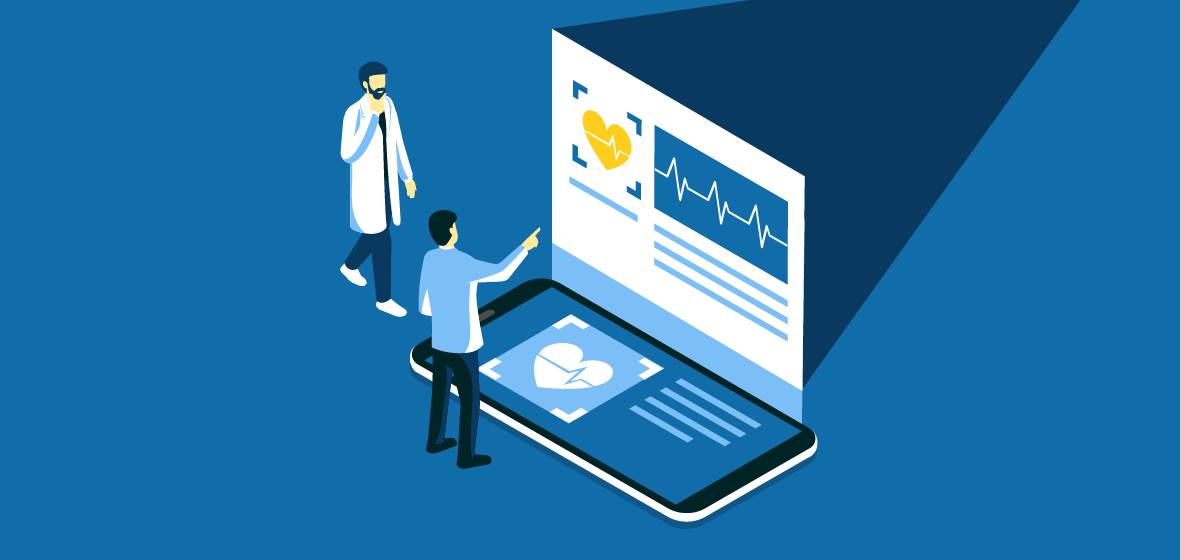Why healthcare orgs should invest in social listening, stat
Written by Brian Weimer
Published on August 10, 2020
Reading time 4 minutes

Bedside manner is one of the hallmarks of quality healthcare. Research reveals a vital part of positive patient experiences (and outcomes) is tied directly to the care giver’s ability to actively listen and empathize with those in need of care. And when patients feel heard, they’re more inclined to share vital information healthcare providers need to deliver the best care possible.
In the not so distant past, all of this was handled during in-person visits. These days? Roughly 80% of Americans head straight to the internet to research anything health-related. Sites like WebMD and Healthline make it all too easy for people to self-diagnose ailments and put off an in-person visit.
In many ways, social media has helped democratize access to medical information and empowered consumers to take charge of their own health. But it’s also created challenges. Social accelerates the spread of misinformation and excludes healthcare workers from key conversations with their patients. And when providers can’t engage with patients where their journey begins (namely, online), it can lead to a lack of consumer trust.
Consider how consumers leverage social and the internet to stay educated during the current pandemic. Since the start of the COVID-19, only 11% of consumers say they’ve received information on what to do from their primary care doctor while 26% get their information from social media. When people shared posts about COVID-19 on Facebook, only 1% of public posts linked to actual health and science resources.
While the pandemic accelerated healthcare’s digital transformation, the reality is this hybrid of online and offline services was always going to be the future of the healthcare industry. Healthcare providers have spent years perfecting their literal bedside manner. To round out the patient experience, healthcare organizations need to double down on social media listening to bring the same level of in-person care online.
Cut through the noise with social listening for healthcare
True empathy starts with listening. But the sheer volume of social content alone makes it tough for healthcare professionals to hear their patients on social and ensure experts’ voices are heard.
Just look at the conversation volume around COVID-19. The pandemic dominated social feeds in March, and a closer look at Sprout Social’s Featured Listening Topic revealed over 20 million social messages on COVID. To cut through the noise, tools like social listening for healthcare can help providers pinpoint rising trends within a larger conversation and focus their social messaging on topics consumers are most interested in. This in turn helps create the trusted dialogue between provider and patient that we find in traditional face-to-face interactions.
When we understand what questions our audience has, then we can be more prescriptive with the most impactful and credible information. Social data from our featured listener reveals Twitter is the platform of choice for amplifying messages around COVID-19, with more than 1.9 trillion impressions generated in July alone. But a closer look at listening data shows YouTube is where most of the engagements take place, with YouTube averaging 861 engagements per post compared to just three engagements per Tweet.
In other words, Twitter isn’t the only place where these conversations happen—platforms like YouTube are equally important for healthcare organizations trying to engage with their audience. With listening data, healthcare organizations can identify where their voices are needed most and connect with consumers on the platform of their choosing.
Elevate patient satisfaction with healthcare sentiment analysis
Customer service ratings for the healthcare industry have existed for quite some time. Traditional methods like surveys, audits, online reviews and even “mystery shoppers” have all contributed to the industry’s understanding of patient satisfaction. Aggregates of these traditional data sources have even led to the creation of sentiment reports that shed interesting light on patients’ experiences and needs.
But what can we learn from social listening data about satisfaction and sentiment around healthcare? With listening data, healthcare organizations can know almost immediately how patients would rate their recent interactions with providers and where the experience needs improvement.
Take the increased need for telemedicine during the pandemic as an example. Listening data around telehealth can help healthcare organizations identify what aspects of remote medicine appeal to consumers and any concerns patients have about the quality of their visits. A closer look at the social data on telehealth reveals a largely positive conversation that highlights experiences and new areas of treatment that could benefit from its use.
Tools like social listening also empower healthcare organizations to manage their brand’s reputation. The relationship between healthcare providers and patients is built on trust, and even the smallest incident can put that relationship in danger. Rather than wait for a scandal to get out of hand, healthcare organizations can proactively monitor for mentions of their brand and jump on potential crises before it spirals out of control.
The future of healthcare is already here
There’s no going back to our pre-digital world. As consumers increasingly take their health and wellbeing into their hands, healthcare organizations need to double down on their digital and social strategies.
Consumers view healthcare as a personal relationship and not just a medical diagnosis. This means healthcare givers have to provide meaningful and accurate information in a timely manner while strengthening the trust between the public and healthcare organizations. Equally important is providing the same level of empathy and care that healthcare consumers expect in-person online. Social is a key component of the patient experience and failure to acknowledge its impact will prevent healthcare organizations from providing the best care possible.
Recommended for you
View all Recommended for you- Categories
Social media and healthcare: how to prioritize what patients need
Published on July 23, 2020 Reading time 8 minutes

Share